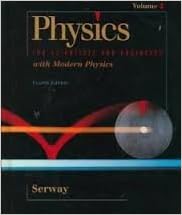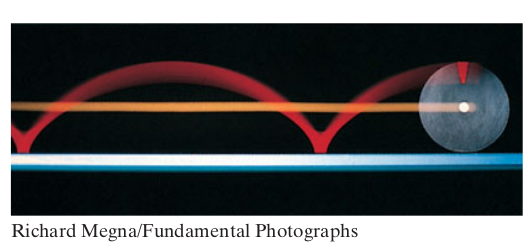Physics
Holiday 2022-2023 Decorative Border Information
Basic Information
![]()
The patterns consists of two sets of overlapping cycloids. The cycloid is the path that a (non-centric) point on a wheel (perhaps with an LED placed there) would trace out while the wheel smoothly rolls without slipping. The effect is most dramatic for a point on the outer rim of the wheel, and it is due to the fact that the point varies from moving at twice the instantaneous speed of the entire vehicle to being momentarily at rest---and then cycling through this process for as long as the vehicle is in motion.


The fact that the gray and blue curves alternate in leading and following demonstrates how the speeds of the outer rim of the wheel changes in time over the course of the wheel turning.
But this curve is significant because it is also the brachistochrone and tautochrone curves. This curve has two properties for an object moving along it under the force of gravity:
- yields the least time for a particle to pass between the two points under a constant gravitational force.
- yields the same time for a particle to reach the bottom starting from anywhere on the curve under a constant gravitational force.
The history is quite interesting. Johann Bernoulli stated the problem as follows:
Given two points A and B in a vertical plane, what is the curve traced out by a point acted on only by gravity, which starts at A and reaches B in the shortest time.
He gave a period of six months for solutions to be submitted; upon receiving none, the period was extended to 18 months.
Five successful solutions were submitted: Sir Isaac Newton, Jakob (or James) Bernoulli, Gottfried Leibniz, Ehrenfried Walther von Tschirnhaus and Guillaume de l'Hôpital. The story as it pertains to Newton is particularly interesting, as Johann Bernoulli mailed the challenge directly to Newton. The latter, upon receiving the letter mid-afternoon solved it that night and mailed his solution--postmarked the next day. Bernoulli is said to have remarked, "I know the lion by his paw" (there are other versions of this quote to similar effect). For his part, the lion--Newton himself-- was not amused by the occasion, expressing a distaste of being taunted in matters mathematical.
The curve holds a special place for me (GMB), being that a well-known picture of this phenomena greeted me the first time I picked up my freshman physics textbook:
The same picture is in the textbook that is used in our introductory, calculus-based courses:
Code and Implementation
The code was written in the R programming language. The following document contains the code:
This code can be run in a R installation on you computer or online at a site like www.rdrr.io/snippets
This will likely not look like the border on the newsletter, but that comes down to scaling.
This image can be added to the sides of the document. A simple LaTeX script was used to carry this out with the tikz package, as indicated below. A TeX/LaTeX distribution will be required on your computer to compile this document.


